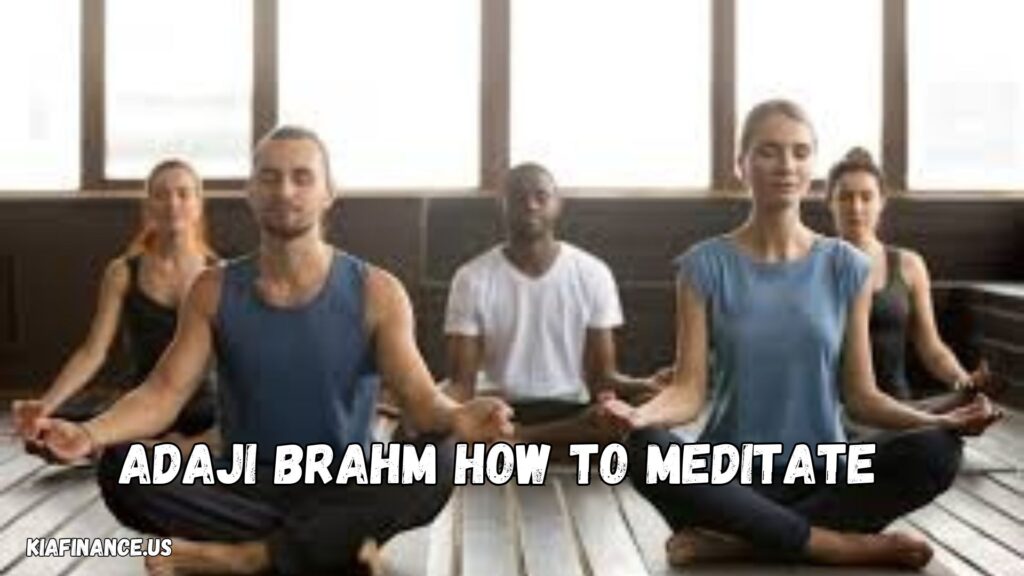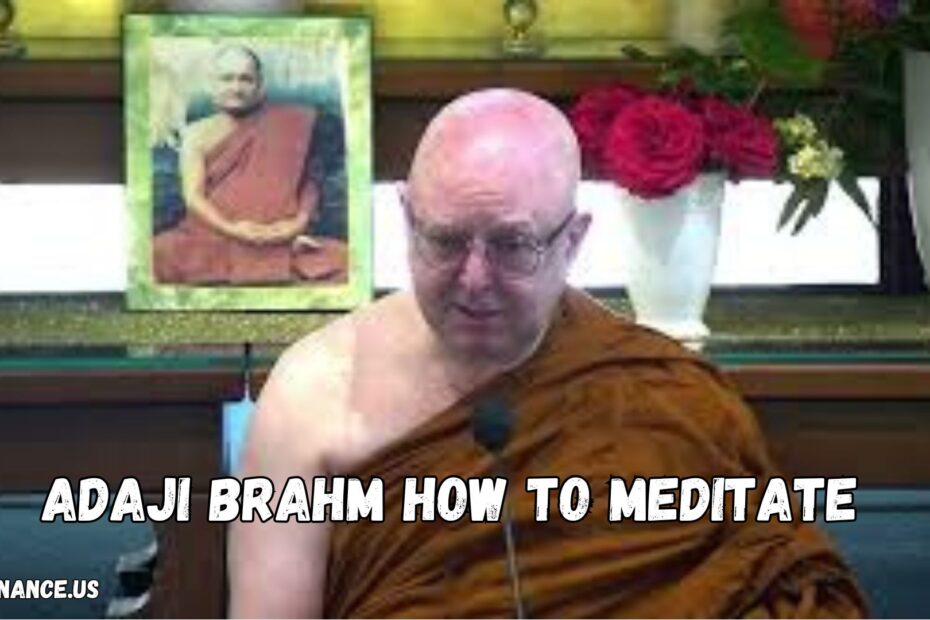Explore Adaji Brahm expert meditation techniques. Learn step-by-step practices, common pitfalls, and best strategies to enhance your meditation journey.
Table of Contents
How to Meditate Like Adaji Brahm: A Comprehensive Guide

Meditation has been a transformative practice for countless individuals, and Adaji Brahm’s methods are revered for their depth and effectiveness. Known for his unique blend of wisdom and practical insights, Adaji Brahm’s techniques empower beginners and experienced meditators alike to achieve mindfulness and inner peace. This guide delves into Brahm’s meditation techniques, offering actionable steps, insights on overcoming challenges, and expert perspectives to deepen your practice. Ready to begin? Let’s explore how Adaji Brahm’s meditation practices can help you unlock tranquility and self-awareness.
Introduction to Adaji Brahm’s Meditation Style
Adaji Brahm, a revered meditation teacher, has developed meditation techniques that blend simplicity with profound impact. His teachings focus on cultivating awareness, compassion, and self-understanding. Unlike traditional approaches that may feel rigid, Brahm’s style is inviting, offering accessible practices for all experience levels. His emphasis on mindfulness and relaxation allows individuals to naturally deepen their meditation over time.
Let’s dive deeper into the essential components of Brahm’s meditation philosophy and practice techniques that foster both mindfulness and emotional well-being.
Overview of Meditation Benefits

Meditation is widely practiced for its mental, physical, and emotional benefits. Here’s how Adaji Brahm’s techniques enhance these benefits:
- Mental Clarity: Regular practice improves focus, memory, and creativity.
- Stress Reduction: Meditation encourages relaxation, helping to decrease stress levels and improve overall well-being.
- Emotional Balance: By developing mindfulness, meditation can lead to increased emotional awareness, making it easier to manage emotions.
- Physical Health: Regular meditation has been linked to better sleep, lower blood pressure, and enhanced immune response.
By practicing Brahm’s meditation techniques, you can experience these benefits more profoundly, thanks to his gentle, open approach to meditative practice.
Key Points: Exploring Brahm’s Meditation Techniques
1. Relaxation as the Foundation
Adaji Brahm’s meditation philosophy emphasizes relaxation over forced focus. Rather than pushing for mental silence, he encourages allowing thoughts to come and go, with the mind finding peace naturally.
- Example: Instead of stressing about not thinking, simply breathe deeply and let your thoughts flow without judgment.
2. Mindfulness of Breath
Focusing on your breath is central to Brahm’s technique, guiding practitioners to observe each inhale and exhale. This method anchors the mind and fosters presence.
- Practical Exercise: Sit comfortably, close your eyes, and focus on the sensation of your breath moving in and out. Notice how it feels and let it become your focal point.
3. Cultivating Compassionate Awareness
Brahm emphasizes being kind to yourself during meditation. Self-judgment or harsh expectations can create stress, so he advocates for a gentle approach.
- Tip: If you become distracted or struggle to focus, gently return your awareness to the breath without frustration.
4. Embracing Silence
For Brahm, silence in meditation is not about eliminating all thoughts but finding a comfortable quietness within. By embracing natural silence, he believes individuals can access a deeper sense of calm.
- Example: Sit for 5-10 minutes daily in silence, just observing. If sounds or thoughts arise, acknowledge them without letting them take over.
Best Practices for Practicing Meditation
1. Set a Regular Time
- Consistency in meditation practice can enhance results. Try to meditate at the same time daily, whether it’s morning, afternoon, or evening.
2. Create a Calm Space
- Find a quiet, comfortable spot. Light a candle, sit on a soft cushion, or use relaxing music or nature sounds.
3. Start Small
- Begin with short sessions, around 5-10 minutes, and gradually increase. This will make meditation a sustainable habit.
4. Practice Non-Judgment
- Meditation is a process, and each session may differ. Embrace each experience without judgment.
Common Challenges and Solutions
1. Distraction and Wandering Thoughts
- Challenge: Many beginners struggle with racing thoughts or feeling restless.
- Solution: When distractions occur, gently refocus on your breath without self-criticism. Over time, your concentration will improve.
2. Impatience with Results
- Challenge: Some people expect immediate results from meditation.
- Solution: Approach meditation with a long-term mindset. Recognize that benefits often emerge gradually.
3. Physical Discomfort
- Challenge: Sitting still can be uncomfortable for some.
- Solution: Adjust your posture as needed or use a chair if sitting on the floor is uncomfortable.
Expert Insights and Future Trends
Meditation is continually evolving with new research and applications in mental health and wellness. Experts predict that meditation will increasingly integrate with digital tools, like VR and biofeedback apps, to enhance accessibility. Adaji Brahm’s approach, emphasizing compassion and relaxation, aligns with these advancements, as both seek to make meditation a more inclusive, adaptable practice.
Future Trends:
- Mindfulness in Digital Wellness: Apps that align with Brahm’s techniques are growing, offering more personalized meditation experiences.
- Incorporation of Compassion in Meditation Apps: This aligns with Brahm’s teachings, promoting emotional well-being as part of the meditation experience.
Conclusion and Final Thoughts
Adaji Brahm’s meditation techniques offer a unique and compassionate approach to finding inner peace and mindfulness. By emphasizing relaxation, breath awareness, and self-compassion, his teachings make meditation accessible and fulfilling. Whether you’re new to meditation or an experienced practitioner, Brahm’s methods encourage a gentle, progressive journey toward a calm and centered life.
Ready to bring Adaji Brahm’s wisdom into your daily life? Start meditating today and let this guide support your journey. Happy meditating!
Frequently Asked Questions (FAQs)
1. What is the main focus of Adaji Brahm’s meditation techniques?
- Adaji Brahm emphasizes relaxation, mindfulness, and compassionate awareness, focusing on being kind to oneself during meditation.
2. How long should beginners meditate?
- Beginners can start with 5-10 minutes daily and gradually increase the duration as they become more comfortable.
3. What should I do if I feel distracted during meditation?
- Gently refocus on your breath without judgment. Over time, managing distractions becomes easier.
4. Are there specific tools or apps recommended for meditation?
- There are many apps, like Headspace and Calm, that support meditation. Look for apps that align with mindfulness and relaxation techniques, as Brahm’s methods emphasize.
5. How soon can I expect results from meditation?
- Meditation is a long-term practice, and benefits often emerge gradually. Consistent practice will yield the best results.
